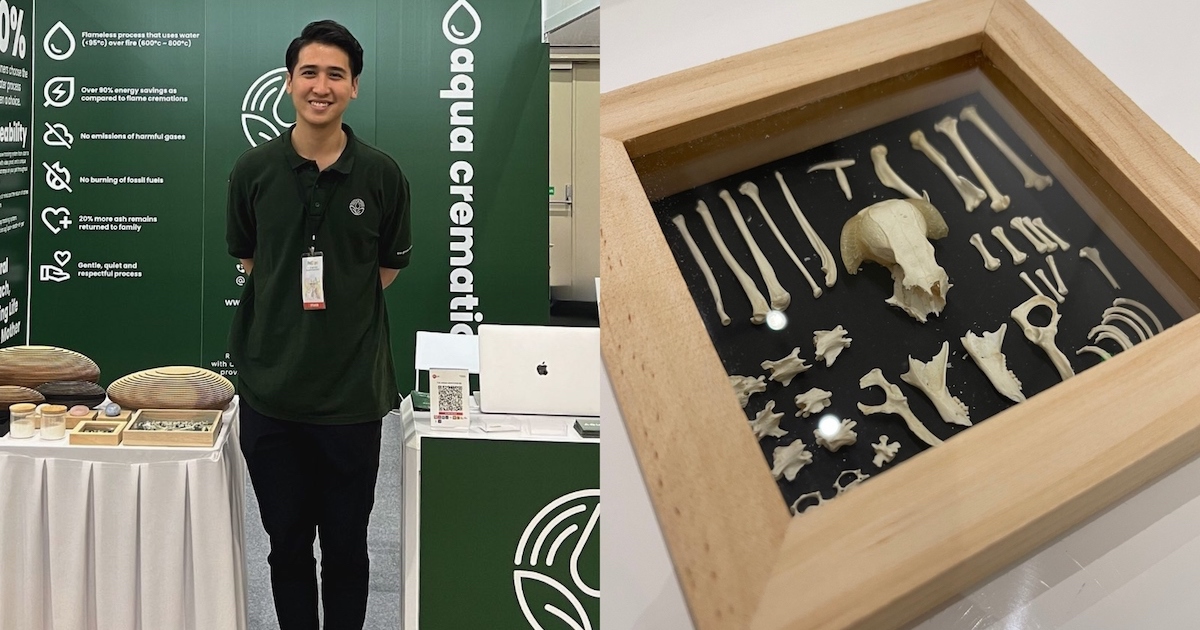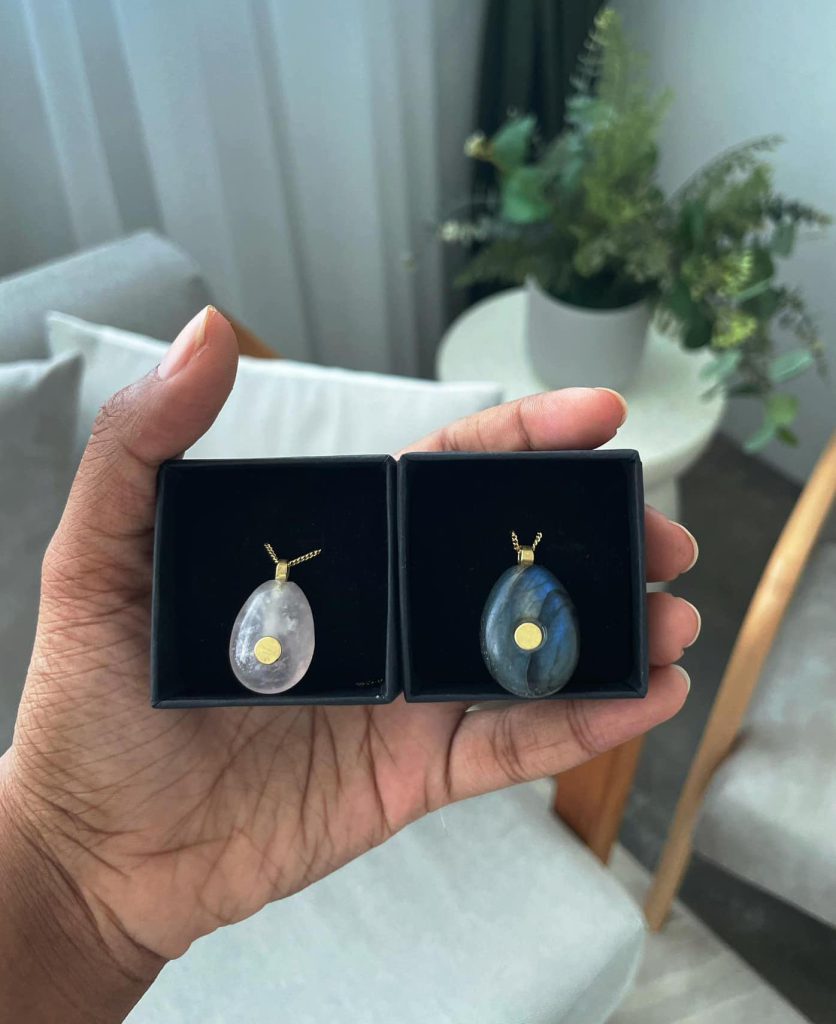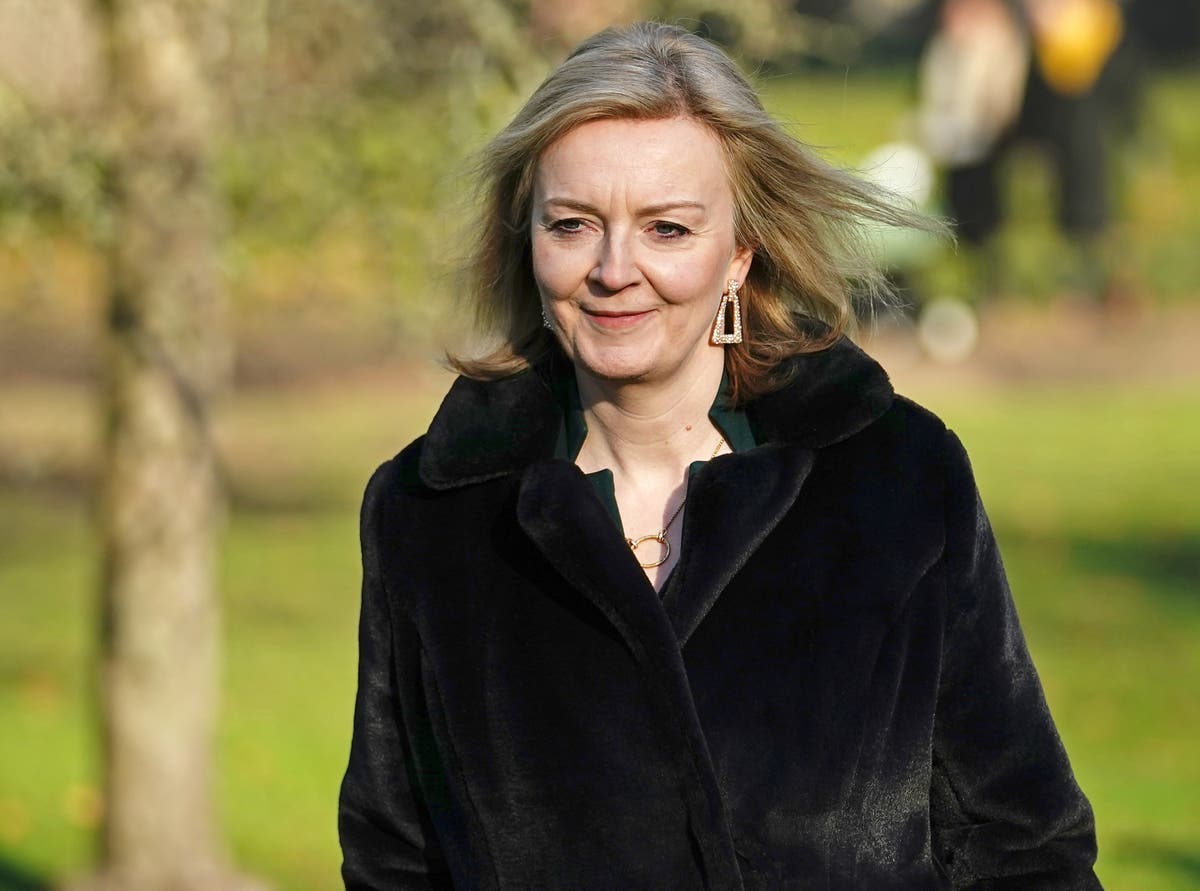Aqua-what? This duo launched S’pore’s first pet cremation service using water
This Singapore startup offers a unique "green" solution to pet cremation using just water. No flames involved.

What if you could cremate your beloved fur baby not using fire, but water? This environmentally-friendly, “less painful” alternative is now a reality in Singapore thanks to The Green Mortician.
Founded by former renewable energy consultant Yang Loo and wildlife rescuer Joe Kam, The Green Mortician is Singapore’s first pet cremation service which uses water instead of fire to process dead pets – better known as aquamation.
Since its launch in March 2023, the duo have performed the procedure on pets such as dogs, cats, birds and hamsters at the 2,000 square feet facility at Toh Guan Centre in Jurong East. It is also the only pet cremation service located in an industrial building, as opposed to traditional farmlands in areas such as Sungei Tengah or Seletar.
Aquamation as an alternative way to “celebrate life”
The idea of aquamation first came to Yang in 2018. He previously worked as a freelance deejay and was in the marketing industry, before becoming a headhunter for renewable energy companies in the Asia Pacific region.
A friend in the funeral industry then told him about aquamation, which is scientifically known as alkaline hydrolysis. Coupled with the steady increase of pet ownership in Singapore in recent years, Yang knew the opportunity was there for the taking.
Alongside his business partner Joe, the duo spent three years “locating suitable space or land, persuading building managements, and navigating the complexities of engaging with relevant agencies to introduce a new technology.”
“The possibility to enact change and difference – and possibly make this available for humans in future in Singapore – is what drives us to go that extra mile,” Yang said.
In addition to aquamation, The Green Mortician also aims to make the procedure less depressing, giving pet owners more time to say their farewells and “celebrate life”.
 A wearable keepsake / Image Credit: The Green Mortician
A wearable keepsake / Image Credit: The Green MorticianIn an effort to provide comfort and solace to families during this difficult time, The Green Mortician remains void of unpleasant and unnecessary elements, including traditional “urns” that may evoke feelings of eeriness or distress. Instead, the crematorium offers vessels specifically designed to suit modern-day homes, as well as wearable keepsakes.
Our aim is to present a more positive and uplifting view of our departed loved ones, inviting families to reflect upon and cherish the joyful moments they shared. In essence, it is a celebration of life.
– Yang Loo, co-founder of The Green MorticianThe memorial halls also boast high-ceilings and modern, nature-inspired décor which aim to evoke a serene atmosphere and recharge visitors.
How does aquamation work?
Aquamation has been widely available in the United States for several years for pets. It was first developed decades ago as a way to discard animal carcasses used in experiments.
It is a reductive process that utilises a solution consisting of 95 per cent water and five per cent alkali salts to break down organic matter into its fundamental components. No pressure is used throughout the process, nor does it involve the use of acids or melting of pets; as acids are corrosive and flames are oxidative.
A common misconception is that the chemical salts used are the primary element driving the process, but in reality, the consistent gentle flow of warm water plays a crucial role. This is based on the theory of collision, where molecules split apart.
The resulting “used water” from aqua cremation, similar to decomposition, contains amino acids, salts, and peptides.
“In some countries, this water is repurposed and returned to the earth, allowing for its reabsorption as energy in alignment with nature’s intended process – a reductive approach similar to burial,” Yang explained.
Additionally, aquamation significantly reduces the time required compared to traditional burial, taking only a day instead of the five to 25 years that burial can take to achieve.
It is a reductive process that utilises a solution consisting of 95 per cent water and five percent alkali salts to break down organic matter into its fundamental components. No pressure is used throughout the process, nor does it involve the use of acids or melting of pets; as acids are corrosive and flames are oxidative.
A common misconception is that the chemical salts used are the primary element driving the process, but in reality, the consistent gentle flow of warm water plays a crucial role. This is based on the theory of collision, where molecules split apart.
But how does aquamation compare to fire cremation?
In Singapore alone, traditional flame-based cremation produces a whopping 5,017,500kg of greenhouse emissions from just dogs in Singapore. To put things in perspective, if all 27,950 human deaths in 2020 were creamated, the total greenhouse emissions would amount to 7,630,350kg.
Sustainable benefits aside, it takes 18 to 24 hours to put an animal carcass through aquamation compared with cremation, which takes two to four hours.
“Some people may not like the idea that it takes this long, but some appreciate the extra time for them to reflect and adjust psychologically through the difficult period,” Yang said.
Aquamation can cost up to almost a thousand dollars
Aquamation also comes with a hefty price tag due to the technology used as well as the treatment and disposal of effluent, or the leftover liquid, after aquamation.
Currently, The Green Mortician charges S$577 to S$977 (US$430 to US$730) for a full-service package depending on the size of the pet. This includes collecting the pet carcass, holding a memorial service, conducting an aquamation, and returning the ashes in an urn to the owners.
Yang hopes that in time, the used water can be repurposed as liquid fertiliser for plant nurseries, which will make the process more sustainable. This would also lower the cost barrier for people to pick this eco-friendly option.
“Although some countries face the issue of (repurposing the used water), we do not foresee such problems happening in Singapore due to its constant adoption of innovative technologies,” he said.
Another major barrier to popularising aquamation is changing the mindsets of people. Some are driven by religion, while others have simply been used to flame-based cremation being the only option for decades; so accepting this new alternative may take time.
However, Yang shared that there is still hope as aquamation technology still allows people to receive the remaining bones and ashes, similar to flame-based crematorium.
We are all born out of water, bodies of any living organism consisting mainly of water. With Aqua Cremation, we now have the option to return to the earth as per the cycle of life, our elements reabsorbed as nature intended.
– Yang Loo, co-founder of The Green MorticianAquamation to cremate human bodies next?
One of The Green Mortician’s top priorities now is ensuring that the water used in aquamation is repurposed or effectively utilised. To that end, Yang and Joe are actively seeking opportunities, networks, and partnerships that can help them achieve this goal.
“This is currently top of our agenda, and we are actively seeking any assistance, advice or collaboration from organisations, individuals, and agencies to take this process forward to full circularity. This aligns with our commitment to zero waste and the environment,” Yang said.
The duo is also exploring opportunities with agricultural industries, particularly plant nurseries, and farms that utilise hydroponic systems. Eventually, they want to use the technology to cremate human bodies in the foreseeable future, once the process has gained broader acceptance in Singapore.
While aquamation may be a game-changer in eco-friendly cremation, it remains to be seen if The Green Mortician will be here to stay.
Due to the novelty of aquamation technology, the company is currently on a three-year approval period. The authorities will then review what it has done before determining if it can continue operating.
Meanwhile, the duo eventually want to use the technology to cremate human bodies in the foreseeable future, once the process has gained broader acceptance in Singapore.
We are confident that aqua cremation represents the future for Singapore in terms of technology, sustainable practices and land conservation; all of which align with the changing needs of Singapore and our society.
– Yang Loo, co-founder of The Green MorticianFeatured Image Credit: The Green Mortician

 Kass
Kass 























![Run An Ecommerce SEO Audit in 4 Stages [+ Free Workbook]](https://api.backlinko.com/app/uploads/2025/06/ecommerce-seo-audit-featured-image.png)









